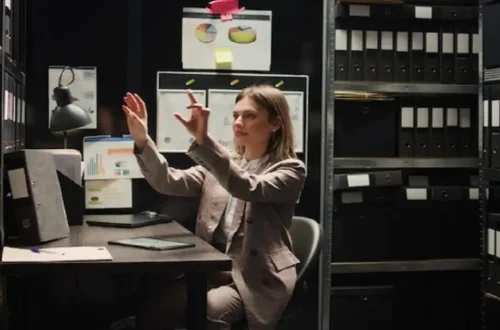The requirement for inclusive leadership has become a necessity in an increasingly global business environment. Leaders across industries are finding that to effectively reach and resonate with diverse audiences, they must adopt strategies that reflect the myriad perspectives, cultures, and values of their stakeholders. One of the most powerful tools at their disposal is video—a medium that transcends geographical boundaries and language barriers. However, creating content that genuinely reflects the principles of inclusive leadership requires more than just pointing a camera and pressing record. It demands a thoughtful approach, leveraging technology and creativity to ensure messages are accessible, relatable, and engaging for everyone.
The Power of Video in Leadership
Video has the unique ability to convey emotion, nuance, and complexity in ways that text or audio alone cannot. It can bring people together, foster a sense of community, and create an immersive learning experience. For leaders striving to connect with a diverse audience, video offers a canvas unrivaled in its potential to showcase inclusivity in action.
Crafting Messages with Universal Appeal
The first step in leveraging video for inclusive leadership is to ensure that the content speaks to a broad audience. This doesn’t mean diluting messages to appeal to the lowest common denominator. Instead, it involves recognizing and celebrating diversity within the content. Here are some strategies:
- Highlight diverse voices: Include perspectives from a range of cultural, racial, gender, and ability backgrounds.
- Use relatable scenarios: Craft stories and examples that resonate across different life experiences.
- Emphasize universal values: Focus on themes like respect, empathy, and collaboration that everyone can relate to.
Leveraging Technology for Inclusivity
Modern technology offers a wealth of tools that can enhance the inclusivity of video content. From video editors that enable polished, professional-looking production to AI-driven solutions that make content more accessible, leaders have numerous options at their disposal.
- Sign Language Interpretation Overlay: Incorporating sign language interpretation into video content can significantly improve accessibility for viewers who are deaf or hard of hearing. Some video editing software now includes options to integrate sign language interpreters via a picture-in-picture overlay, ensuring that the content is more inclusive.
- Video editor: A robust video editing software is indispensable for creating high-quality content that engages diverse audiences. These tools can help you cut, splice, and enhance your videos, ensuring they are clear, concise, and visually appealing. Moreover, many video editors come with features that allow for the incorporation of subtitles, animations, and interactive elements, making your content more engaging and accessible.
- Voice Recognition and Automated Dubbing: Voice recognition technology can automate the process of dubbing videos into multiple languages, making content accessible to a global audience. This technology can detect the spoken language in a video and overlay it with a synthetic voice in another language, preserving the original tone and inflection as closely as possible.
- Transcribe audio to text: Making your video content accessible to individuals who are deaf or hard of hearing is a critical component of inclusivity. Tools that transcribe audio to text not only provide accurate subtitles but also ensure that your message is comprehensible to non-native speakers and enhances SEO for your content.
- Content Warning Systems: To respect the diverse sensitivities of audiences, incorporating content warning systems can help viewers prepare for or avoid content that might be distressing. These systems can be automated to detect potentially triggering content and prompt creators to add warnings or offer viewers the option to skip certain segments.
- AI avatar generator: For leaders looking to add a creative touch to their videos or address sensitive topics with anonymity, an AI avatar generator can be a game-changer. These tools create digital personas that can represent diverse demographics, ensuring that all viewers see themselves reflected in your content.
Implementing Inclusive Video Content
Knowing the tools and principles behind inclusive video content is just the start. Implementation requires a strategic approach and a commitment to ongoing improvement. Here are some steps to ensure your video content meets the mark:
- Plan with diversity in mind: From the outset, consider how your video will resonate with different audiences. This includes thinking about the visuals, language, and examples used.
- Seek diverse input: Involve individuals from various backgrounds in the content creation process. Their insights can help identify potential blind spots and enrich the content.
- Use inclusive language: Language matters. Use terms and phrases that are inclusive and avoid those that might alienate or offend segments of your audience.
- Prioritize accessibility: Make sure your videos are accessible to everyone, including those with disabilities. This means ensuring that videos are compatible with screen readers, providing captions, and considering sign language interpretations.
- Test and get feedback: Before releasing your video, test it with a small, diverse group to gather feedback on its inclusivity. Use this feedback to make necessary adjustments.
The Impact of Inclusive Video Content
The benefits of adopting an inclusive approach to video content are manifold. Not only does it demonstrate a commitment to diversity and inclusion, but it also:
- Enhances engagement: By reflecting a broader range of perspectives, inclusive video content can resonate with a wider audience, leading to increased engagement.
- Builds trust and loyalty: When people see themselves represented in your content, they’re more likely to trust your message and remain loyal to your brand or organization.
- Fosters innovation: Inclusive content creation encourages thinking outside the box, leading to more creative and innovative video content.
In Conclusion
Inclusive leadership through video is about more than just adding diversity to the screen; it’s about creating content that speaks to the heart of all viewers, regardless of their background. By leveraging tools like a sophisticated video editor, services that transcribe audio to text, and innovative AI avatar generators, leaders can craft messages that are not only inclusive but also engaging and impactful. The journey





